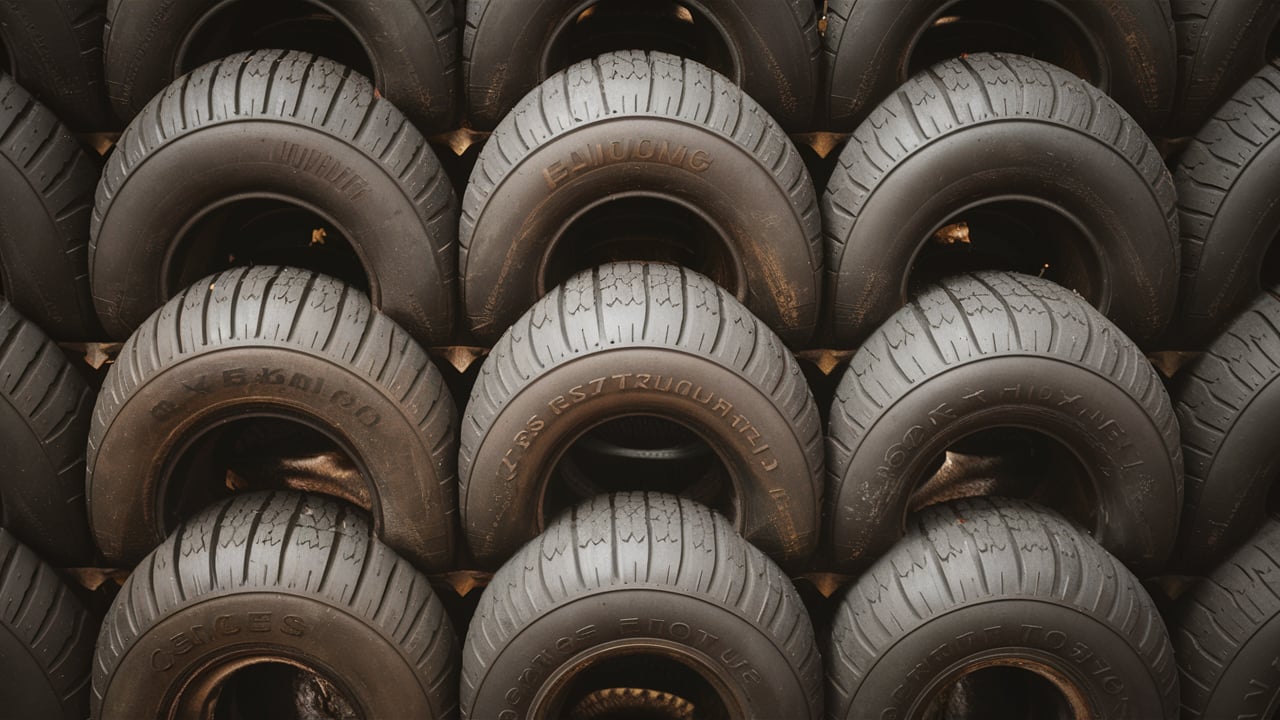Introduction
The tyre industry has witnessed significant advancements over the years, particularly in the realms of recycling and sustainable practices. Understanding the economics behind scrap tyre prices, tyre recycling prices, and the role of carbon fiber coating is crucial for stakeholders in this sector.
Scrap Tyre Prices
Scrap tyre prices fluctuate based on several factors, including supply and demand, the condition of the tyres, and geographical location. The scrap tyre market is influenced by the availability of used tyres, the efficiency of collection systems, and the demand for recycled tyre materials. Prices are also affected by environmental regulations and the cost of disposal.
Factors Influencing Prices
1. Condition of Tyres: Tyres that are in better condition, even if they are no longer suitable for their original purpose, can fetch higher prices. These tyres might be retreaded or repurposed for other applications.
2. Geographical Location: In regions where there is a high demand for recycled materials or stringent disposal regulations, scrap tyre price tends to be higher.
3. Recycling Technology: Advanced recycling technologies that can efficiently process tyres into valuable materials can impact prices positively by increasing the demand for scrap tyres.
4. Regulations and Policies: Government policies and regulations aimed at reducing waste and promoting recycling can influence the market. Incentives for recycling can drive up the price of scrap tyres.
Current Price Trends
As of the latest data, scrap tyre prices can range from $0.50 to $2.00 per tyre, depending on the factors mentioned above. Bulk buyers, such as recycling facilities, might negotiate lower prices per tyre due to the volume of their purchases. However, these prices are subject to change based on market conditions and technological advancements in tyre recycling.
The Recycling Process
The tyre recycling process involves several stages: collection, shredding, granulation, and the separation of materials. Each stage incurs costs, which collectively contribute to the overall recycling price. The end products, such as crumb rubber, steel, and textile, have their market values that influence the economics of tyre recycling.
Cost Breakdown
1. Collection and Transportation: This is the initial cost in the recycling chain. Efficient collection systems and proximity to recycling facilities can reduce these costs.
2. Shredding and Granulation: These processes involve machinery that breaks down tyres into smaller pieces and granulates them into usable forms. The cost of machinery, energy consumption, and maintenance are significant factors.
3. Material Separation: Separating rubber from steel and textiles requires advanced technologies, which can be costly. The purity of the separated materials affects their market value.
Pricing of Recycled Materials
1. Crumb Rubber: This is a versatile material used in various applications, from playground surfaces to asphalt modification. The price of crumb rubber typically ranges from $0.20 to $0.40 per pound.
2. Steel: Recovered steel from tyres can be recycled and sold in the scrap metal market. The price varies depending on the quality and market demand.
3. Textile: Textile fibers are less valuable but can be used in industrial applications. Their market value is lower, often around $0.05 per pound.
Economic Viability
The viability of tyre recycling depends on balancing the costs with the revenue generated from selling recycled materials. Innovations in recycling technologies and increasing demand for sustainable materials are making tyre recycling more economically attractive. Government subsidies and regulations promoting recycling also play a significant role in supporting the industry.
Carbon Fiber Coating
Carbon fiber is a strong, lightweight material known for its high tensile strength and durability. It is used in various industries, including automotive, aerospace, and sports equipment. Carbon fiber coating involves applying a thin layer of carbon fiber to enhance the properties of the underlying material.
Benefits of Carbon Fiber Coating
1. Strength and Durability: Carbon fiber coatings significantly increase the strength and durability of the material they are applied to. This makes them ideal for applications requiring high performance and longevity.
2. Weight Reduction: One of the primary advantages of carbon fiber is its lightweight nature. Coating with carbon fiber can reduce the overall weight of a product while maintaining or enhancing its strength.
3. Corrosion Resistance: Carbon fiber coatings provide excellent resistance to corrosion, making them suitable for use in harsh environments.
Applications in the Tyre Industry
1. Enhanced Tyre Performance: Applying carbon fiber coating to tyre treads can improve performance by increasing traction and reducing wear. This can lead to longer-lasting tyres and better fuel efficiency.
2. Structural Components: Carbon fiber coatings can be used on various structural components of tyres, such as belts and beads, to enhance their strength and durability.
3. Lightweight Design: Reducing the weight of tyres can improve vehicle performance and fuel efficiency. Carbon fiber coatings offer a way to achieve this without compromising on strength.
Cost Considerations
The cost of carbon fiber coating is influenced by the price of raw carbon fiber, the complexity of the coating process, and the application method. While carbon fiber coatings can be expensive, the long-term benefits in terms of durability and performance can justify the investment. In the tyre industry, the use of carbon fiber coating is still in the experimental stages but holds significant promise for the future.
Advantages of carbon fiber coating
Carbon fiber coating is a cutting-edge technology that has garnered attention across various industries for its exceptional properties and performance benefits.
1. Superior Strength-to-Weight Ratio
One of the most significant advantages of carbon fiber coating is its outstanding strength-to-weight ratio. Carbon fiber is five times stronger than steel while being significantly lighter. This makes it an ideal material for applications where weight reduction is crucial without compromising on strength.
2. Enhanced Durability and Longevity
Carbon fiber coatings offer excellent durability and resistance to wear and tear. They can withstand harsh environmental conditions, including extreme temperatures, UV radiation, and chemical exposure, without degrading.
3. Corrosion and Chemical Resistance
Carbon fiber is inherently resistant to corrosion and many chemicals. This property makes it suitable for use in environments where other materials would corrode or degrade over time.
4. Improved Thermal Conductivity
Carbon fiber has good thermal conductivity properties, making it an excellent material for applications that require efficient heat dissipation or thermal management.
5. Aesthetic Appeal
Carbon fiber coatings provide a sleek, modern appearance that is highly sought after in various consumer products. The distinctive woven pattern of carbon fiber adds a touch of sophistication and high-tech appeal.
Conclusion
Understanding the economics of scrap tyre prices, tyre recycling prices, and the potential of carbon fiber coating is essential for stakeholders in the tyre industry. Market dynamics, technological advancements, and regulatory frameworks play crucial roles in shaping these areas. As the industry continues to evolve, innovations in recycling technologies and materials like carbon fiber will drive sustainable practices and enhance the overall performance of tyres. By staying informed about these trends, industry players can make strategic decisions that align with environmental and economic goals.







